What is facial recognition?
Facial recognition technology is a type of biometric software that uses algorithms to analyze and compare facial features to identify an individual. It is increasingly being used in a variety of settings, including law enforcement, border control, and marketing.
One of the main advantages of facial recognition is its ability to accurately identify people even when they are not looking directly at the camera or when their appearance has changed slightly, such as using makeup or facial hair. This makes it an effective tool for identifying suspects or missing persons.
However, facial recognition technology has also raised concerns about privacy and the potential for abuse. Some worry that the widespread use of facial recognition could lead to the creation of a surveillance state, where people are constantly monitored, and their movements tracked. Others are concerned about the potential for false positives, where innocent people are mistakenly identified as suspects.
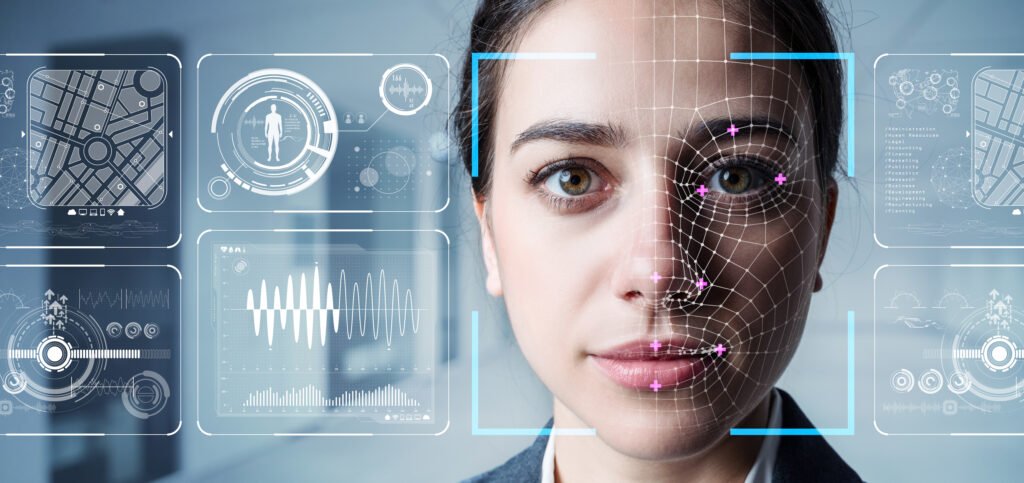
To address these concerns, some governments have implemented regulations on the use of facial recognition. For example, the European Union has implemented the General Data Protection Regulation (GDPR), which requires companies to obtain explicit consent before collecting and using personal data, including biometric data.
Despite these concerns, facial recognition technology continues to advance and is likely to become more prevalent in the coming years. It is important for individuals and policymakers to consider the potential benefits and drawbacks of this technology and to ensure that it is used in a responsible and ethical manner.
In addition to its use in law enforcement and border control, facial recognition technology is also being used in a variety of other settings. For example, it is being used in marketing to target advertisements to specific demographics and to track customer behavior in retail stores. It is also being used in education to track attendance and in healthcare to identify patients and protect their privacy.
However, there are also potential drawbacks to the use of facial recognition in these settings. In marketing, for example, there are concerns about the ethical implications of targeting advertisements based on a person’s appearance or ethnicity. In education, there are concerns about the impact on student privacy and the potential for unfair treatment of certain groups.
How does facial recognition work?
Facial recognition is a technology that uses machine learning algorithms to analyze and identify specific characteristics of a person’s face. These characteristics can include the shape of the face, the distance between the eyes, the nose size, and the jawline.
To perform facial recognition, a computer is trained on a large dataset of images that includes many different faces. The computer analyzes each image and extracts the relevant facial features, which are then used to create a mathematical representation of the face, known as a facial template. When the facial recognition system is asked to identify a particular person, it compares the facial template of the unknown face to a database of known faces. If the system finds a match, it will identify the person as the individual associated with the matching facial template in the database.
Facial recognition technology has a number of applications, including security, law enforcement, and social media tagging. However, it has also raised concerns about privacy and the potential for abuse.
There are several different approaches to facial recognition, including:
- Eigenface method: This method involves creating a mathematical representation of the face known as an “eigenface,” which is derived from the eigenvectors of the covariance matrix of a set of training images. The eigenface is a composite face that represents the features that are most common across the training set.
- Fisherface method: This method is similar to the eigenface method, but it takes into account the differences between individuals in the training set, rather than just the common features. This allows the system to be more accurate at distinguishing between different people.
- Deep learning: This method involves training a neural network on a large dataset of images and allowing the network to learn the features of a face on its own. This allows the system to recognize more subtle differences between faces and can result in higher accuracy.
Regardless of the approach used, facial recognition technology has the potential to be highly accurate, but it is not foolproof. Factors such as lighting, angle, and facial expression can affect the accuracy of the system. Additionally, there have been concerns about the potential for bias in facial recognition algorithms, as they may be more likely to accurately recognize faces from certain racial or ethnic groups compared to others.
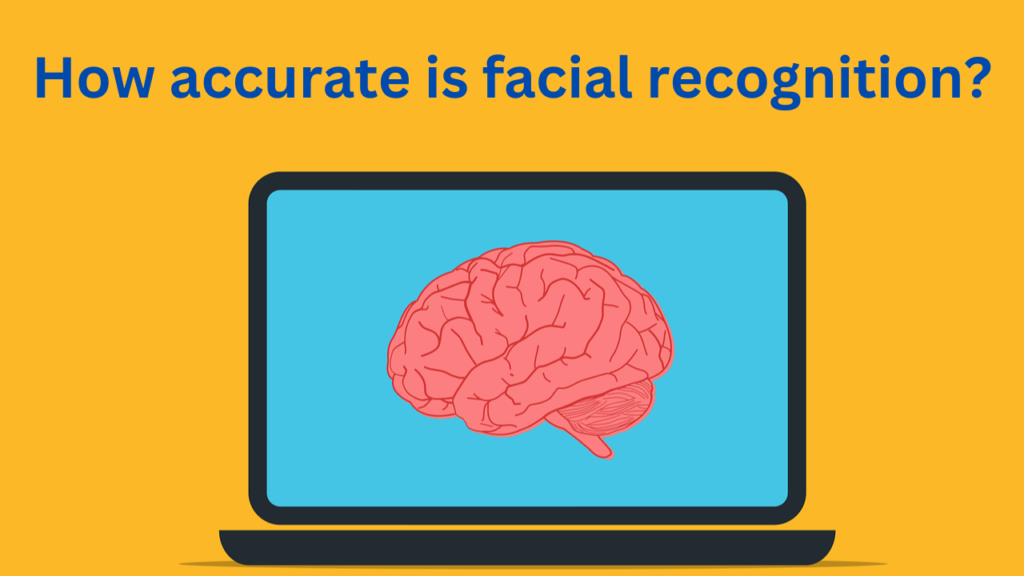
How accurate is facial recognition?
The accuracy of facial recognition technology can vary depending on a number of factors, including the quality of the images being used, the specific algorithm being employed, and the diversity of the training dataset. In general, facial recognition technology can be highly accurate, with some systems achieving accuracy rates of over 99%.
However, it is important to note that the accuracy of facial recognition technology can be affected by a number of factors, including:
- The lighting conditions: Poor lighting or shadows can make it more difficult for the system to accurately recognize a face.
- The angle of the face: Facial recognition algorithms are generally more accurate when the face is facing the camera directly.
- The facial expression: Changes in facial expression, such as smiling or frowning, can affect the accuracy of the system.
- The presence of facial obstructions: Objects such as glasses, hats, or facial hair can also affect the accuracy of the system.
In addition to these factors, there have been concerns about the potential for bias in facial recognition algorithms, as they may be more likely to accurately recognize faces from certain racial or ethnic groups compared to others. This is an area of active research and efforts are being made to address these issues.
Who invented facial recognition?
The idea of using computers to recognize faces dates back to the 1960s, but the development of facial recognition technology as we know it today has a more recent history.
One of the earliest and most influential systems was developed in the 1980s by researchers at the Massachusetts Institute of Technology (MIT). This system, called “Eigenface,” used a mathematical technique known as principal component analysis to create a representation of the face known as an “eigenface.” The system was able to recognize faces with a high degree of accuracy, but it was limited by the need for high-quality images and was not robust to changes in lighting or facial expression.
In the 1990s, researchers at the University of Maryland developed a system called “Fisherface,” which was based on the same underlying principles as Eigenface but was able to consider the differences between individuals in the training set. This made the system more accurate at distinguishing between different people.
In the 21st century, the development of machine learning techniques, particularly deep learning, has led to significant advances in facial recognition technology. These techniques have allowed facial recognition systems to become more accurate and robust and have led to the widespread adoption of the technology in a variety of applications.
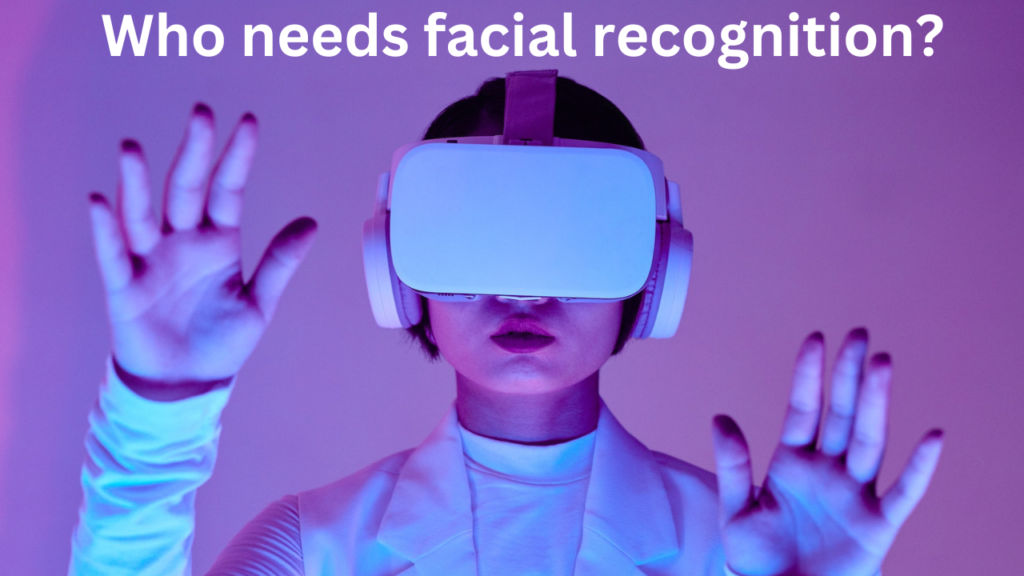
Who needs facial recognition?
Facial recognition technology is used in a variety of applications, including security, marketing, and entertainment. Some examples of organizations or individuals who may use facial recognition include:
- Law enforcement agencies: Police departments may use facial recognition to identify suspects in surveillance footage or to search for missing persons.
- Retail businesses: Stores and malls may use facial recognition to track customer traffic and behavior, and to personalize marketing and advertising efforts.
- Airports and other transportation hubs: Facial recognition may be used for security and identity verification purposes, such as verifying a passenger’s identity when checking in for a flight or when entering a secure area.
- Smartphone and other device manufacturers: Facial recognition may be used as a convenient way to unlock devices, such as smartphones and laptops.
- Theme parks and other entertainment venues: Facial recognition may be used for ticketing and access control purposes, and to personalize the customer experience.
This is just a small sampling of the many potential uses for facial recognition technology.
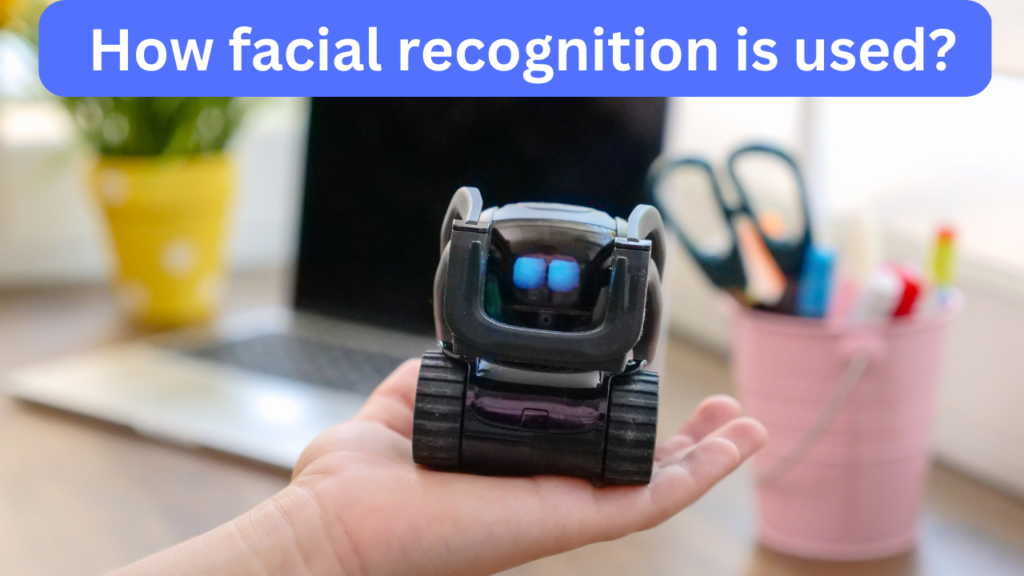
How facial recognition is used?
Facial recognition technology is used in a variety of applications, including:
- Security: Facial recognition can be used to authenticate individuals for access to secure facilities or devices.
- Law enforcement: Facial recognition can be used to identify suspects in a criminal investigation.
- Marketing: Facial recognition can be used to track consumer behavior and tailor advertising to individual consumers.
- Virtual assistants: Facial recognition can be used to enable virtual assistants, such as Apple’s Siri or Amazon’s Alexa, to recognize individual users and customize their experiences.
- Social media: Facial recognition can be used to automatically tag people in photos on social media platforms.
There are many other potential uses for facial recognition technology, and it is an active area of research and development. However, the use of facial recognition has also raised concerns about privacy and the potential for abuse.
Examples of facial recognition technology
There are many examples of facial recognition technology in use today. Here are a few:
- Apple’s Face ID: This is a facial recognition system that is used to unlock the iPhone and other Apple devices.
- Microsoft’s Hello: This is a facial recognition system that is used to authenticate users of Windows 10 devices.
- Amazon’s Rekognition: This is a cloud-based facial recognition service that can be used to identify individuals in images and videos.
- Facebook’s DeepFace: This is a facial recognition system that is used to automatically tag people in photos on the social media platform.
- Google’s Photo app: This app uses facial recognition to group similar photos of the same person together and allow users to search for photos by the person’s name.

Advantages of face recognition
Some potential advantages of facial recognition technology include:
- Improved security: Facial recognition can be used to authenticate individuals for access to secure facilities or devices, which can help to improve security.
- Enhanced convenience: Facial recognition can make it easier for individuals to access their devices and accounts, as they do not need to remember passwords or use other authentication methods.
- Increased efficiency: Facial recognition can help to streamline processes and make them more efficient, such as by automatically tagging people in photos or by enabling virtual assistants to recognize individual users.
- Greater accuracy: Facial recognition can be more accurate than other authentication methods, such as passwords, which can be prone to errors.
- Enhanced personalization: Facial recognition can be used to tailor products and services to individual users, which can enhance the user experience.
However, it is important to note that the use of facial recognition technology also raises concerns about privacy and the potential for abuse.
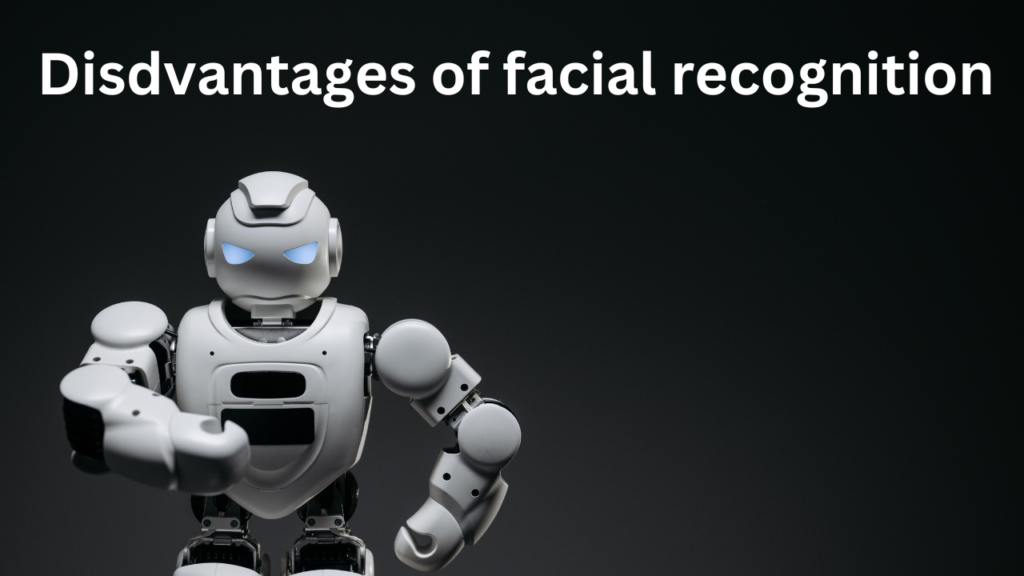
Disadvantages of face recognition
Some potential disadvantages of facial recognition technology include:
- Privacy concerns: The use of facial recognition technology can raise concerns about the collection and use of personal data. There is also the risk that facial recognition could be used to monitor individuals without their knowledge or consent.
- Accuracy issues: While facial recognition technology has improved significantly in recent years, it is not always accurate, and there have been instances of false positives and false negatives.
- Bias: Some facial recognition systems have been found to be less accurate for certain groups of people, such as people of color or women. This can lead to discrimination and unfair treatment.
- Legal and ethical issues: The use of facial recognition technology raises a number of legal and ethical questions, such as how the data collected through the technology should be used and who should be responsible for ensuring its accuracy.
- Cost: Implementing and maintaining a facial recognition system can be expensive, which may be a barrier for some organizations.
- Dependence: Relying too heavily on facial recognition technology could lead to a decrease in human decision-making skills and an overreliance on the technology.
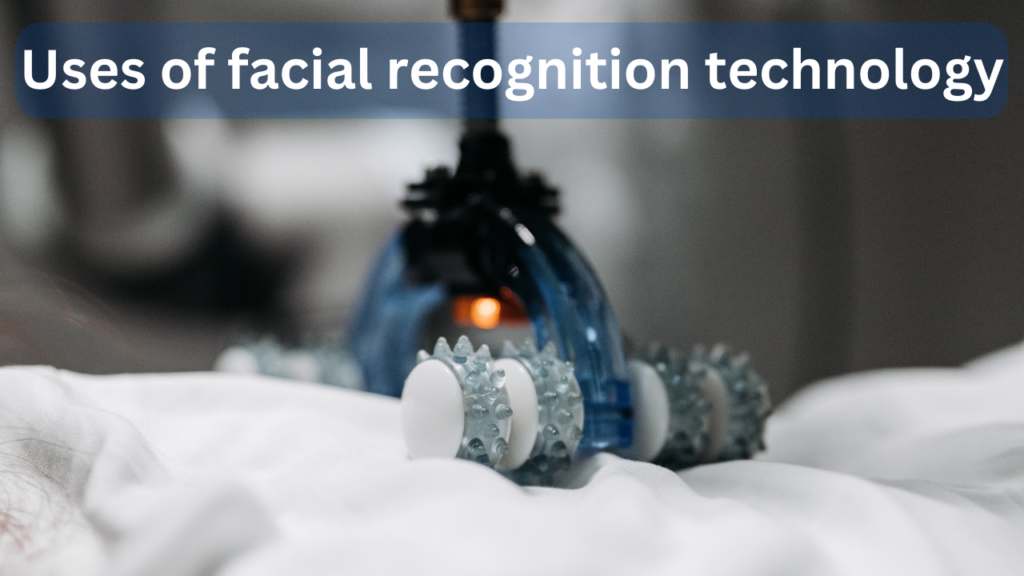
Uses of facial recognition technology
Facial recognition technology can be used in a variety of applications, including:
- Security: Facial recognition can be used to authenticate individuals for access to secure facilities or devices.
- Law enforcement: Facial recognition can be used to identify suspects in a criminal investigation.
- Marketing: Facial recognition can be used to track consumer behavior and tailor advertising to individual consumers.
- Virtual assistants: Facial recognition can be used to enable virtual assistants, such as Apple’s Siri or Amazon’s Alexa, to recognize individual users and customize their experiences.
- Social media: Facial recognition can be used to automatically tag people in photos on social media platforms.
- Customer service: Facial recognition can be used to identify customers and personalize their experiences, such as by suggesting products or services that may be of interest to them.
- Education: Facial recognition can be used to monitor attendance and participation in classrooms.
- Healthcare: Facial recognition can be used to identify patients and access their medical records.
There are many other potential uses for facial recognition technology, and it is an active area of research and development.

Conclusion
In conclusion, facial recognition technology can offer a range of benefits, such as improved security and enhanced convenience. However, it is important to carefully consider the potential disadvantages of facial recognition, including privacy concerns, accuracy issues, bias, legal and ethical issues, cost, and the potential for dependence. It is also important to ensure that any facial recognition system is used in a responsible and transparent manner, with appropriate safeguards in place to protect individuals’ privacy and prevent abuse.
Facial recognition technology has the potential to be a powerful tool for identifying suspects, tracking attendance, and protecting privacy in a variety of settings. However, it is important for individuals and policymakers to consider the potential benefits and drawbacks of this technology and to ensure that it is used in a responsible and ethical manner.

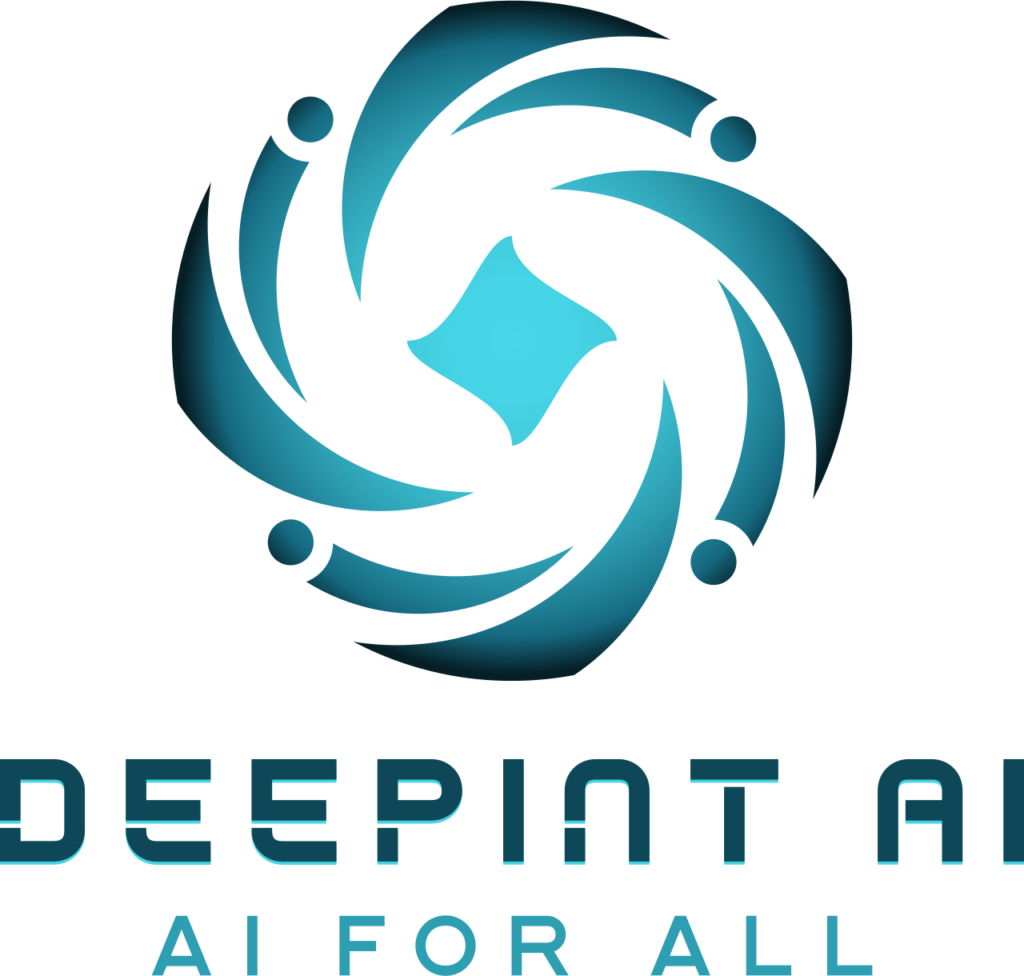
2 thoughts on “What is Facial Recognition & How does it Work?”